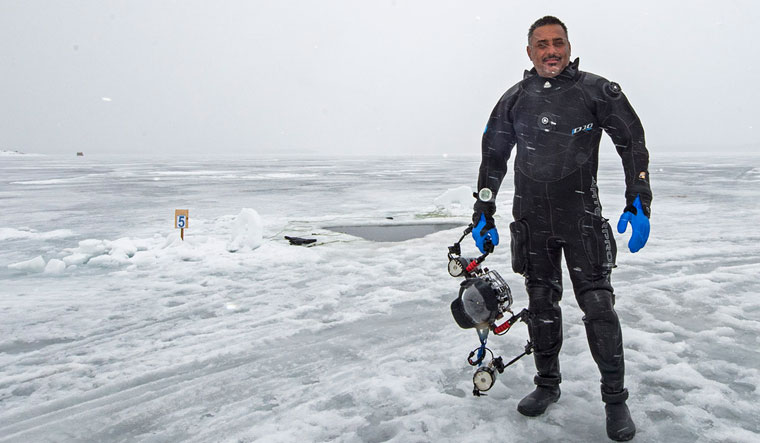His photograph of a male gharial ferrying its babies on its back across the Chambal River was highly commended in this year’s Wildlife Photographer of the Year competition. An award-winning nature photographer, Dhritiman Mukherjee is a conservationist at heart. He spends around 280 days a year in the field, clicking everything from snow leopards in Ladakh to marine life in Antarctica or the lava lake in Congo. Excerpts from an interview:
Q\ Tell us about the gharials you came across in Chambal.
A\ Gharials are a critically endangered species. Male gharials mate with seven to eight females. Males guard hatchlings. They are reclusive and shy. But during breeding time, they become aggressive. If you go close to their offspring, they will attack you.
I came across the gharial and his babies during a photography tour to Chambal in 2017. Initially, I didn’t take any pictures. I would go to the riverbank and simply watch them. They got comfortable with me as they realised I wasn’t a troublemaker. Only then I started taking pictures.
Q\ How did you manage to shoot those breath-taking pictures of the snow leopard in Ladakh?
A\ While chasing the snow leopard, I made a hideout that blended in with the rocky terrain. The snow leopard had killed a zho, a hybrid of a yak and a cow. My hideout offered a view to the kill. At night, the snow leopard would come and eat its prey…. I stayed in my hideout for eight days. On the ninth day, I found myself face-to-face with the snow leopard as I came out. It looked at me for a while. By then, it had accepted me.
Q\How can photography be used for conservation?
A\ I consider photography as a tool for conservation. I document species that are most likely to disappear. In 2018, I, along with a group of scientists, went on an expedition to Arunachal Pradesh. It was called the Abor expedition…. Rare species of animals and reptiles were rediscovered during the expedition. Similarly, I spent days on a tree at Narcondam, a remote island in Andaman, to photograph hornbills. Hornbills are endemic to Narcondam. The scientific community relies on these photographs for evidence.
At one point, large-scale hunting had caused the decline of Amur Falcons in Nagaland. Community-led initiatives helped a lot in sensitising people against cruelty towards them. Photographs played a significant role in these campaigns.
Q\ What’s next?
A\ I want to explore Indian caves. I am also planning an expedition to the northeast, where not much work is done. I am fascinated with tree canopies, lakes, rivers, and freshwater ecosystem.


